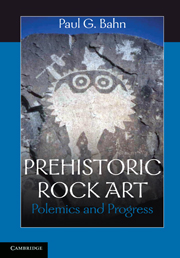Book contents
- Frontmatter
- Contents
- Figures
- Foreword by H. C. Woodhouse
- Acknowledgements
- Introduction
- 1 Art on the rocks
- 2 Myths and meanings
- 3 The emperor's new clothes I: sloppy tailoring
- 4 The emperor's new clothes II: fashion disasters
- 5 Location, location, location
- 6 The votive motive
- 7 Mustn't crumble
- Conclusion
- Select bibliography
- Index
4 - The emperor's new clothes II: fashion disasters
Published online by Cambridge University Press: 05 June 2012
- Frontmatter
- Contents
- Figures
- Foreword by H. C. Woodhouse
- Acknowledgements
- Introduction
- 1 Art on the rocks
- 2 Myths and meanings
- 3 The emperor's new clothes I: sloppy tailoring
- 4 The emperor's new clothes II: fashion disasters
- 5 Location, location, location
- 6 The votive motive
- 7 Mustn't crumble
- Conclusion
- Select bibliography
- Index
Summary
When any model becomes an Idol its advocates begin to act like priests and inquisitors.
Robert Wilson, cited by White (2000: 42)As we have just seen, all the neuropsychological data used to support the ‘shamanic theory’ are outdated, distorted, or simply false. So eloquent and persuasive were some of the writings, so alluring was the chance of ‘reading’ some ancient rock art, however, that numerous people adopted the theory's claims quite unquestioningly – all fads have their zealots, adept at leaping onto passing bandwagons.
The other class of evidence used to support the ‘shamanism sham’ was ethnography, particularly in southern Africa and California, and this too was used in an outrageously selective and distorted fashion in both places, as we shall see shortly. Eventually, virtually every rock art corpus in the world was dragged under the same umbrella (as was some mural art, such as at Çatal Höyük in Turkey): the result was that world rock art became like a packet of M&Ms – they may look different, but they all taste the same. In deriving all the imagery from the same shamanic source, there was no longer any chiaroscuro or any syncopation. It was like mixing all the paint pots together, and what you get is a sludgy brown.
It was, moreover, an insult not only to the intelligence of readers, but also and above all to the intelligence, capabilities, imagination, and creativity of the prehistoric artists.
- Type
- Chapter
- Information
- Prehistoric Rock ArtPolemics and Progress, pp. 94 - 136Publisher: Cambridge University PressPrint publication year: 2010



